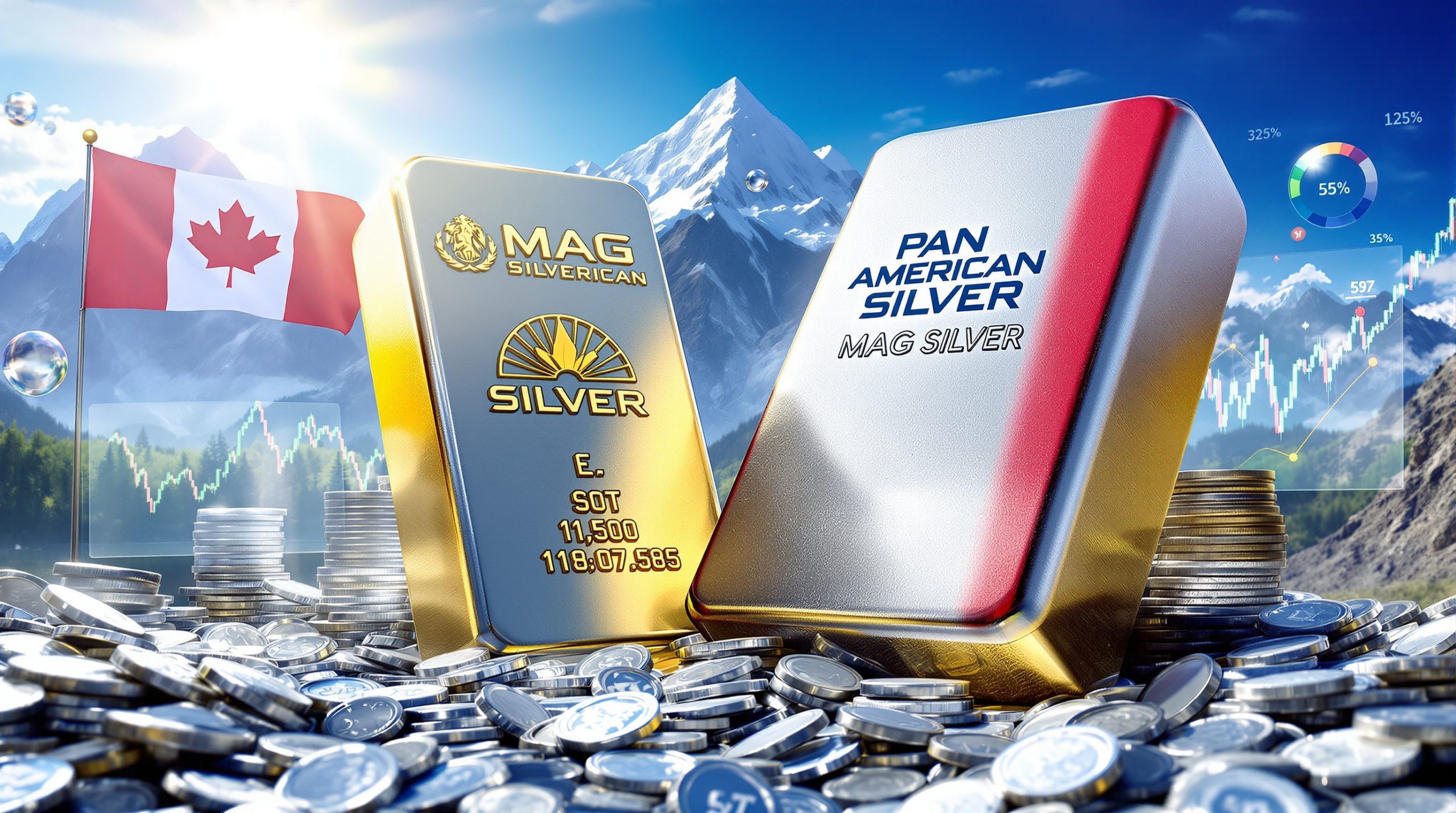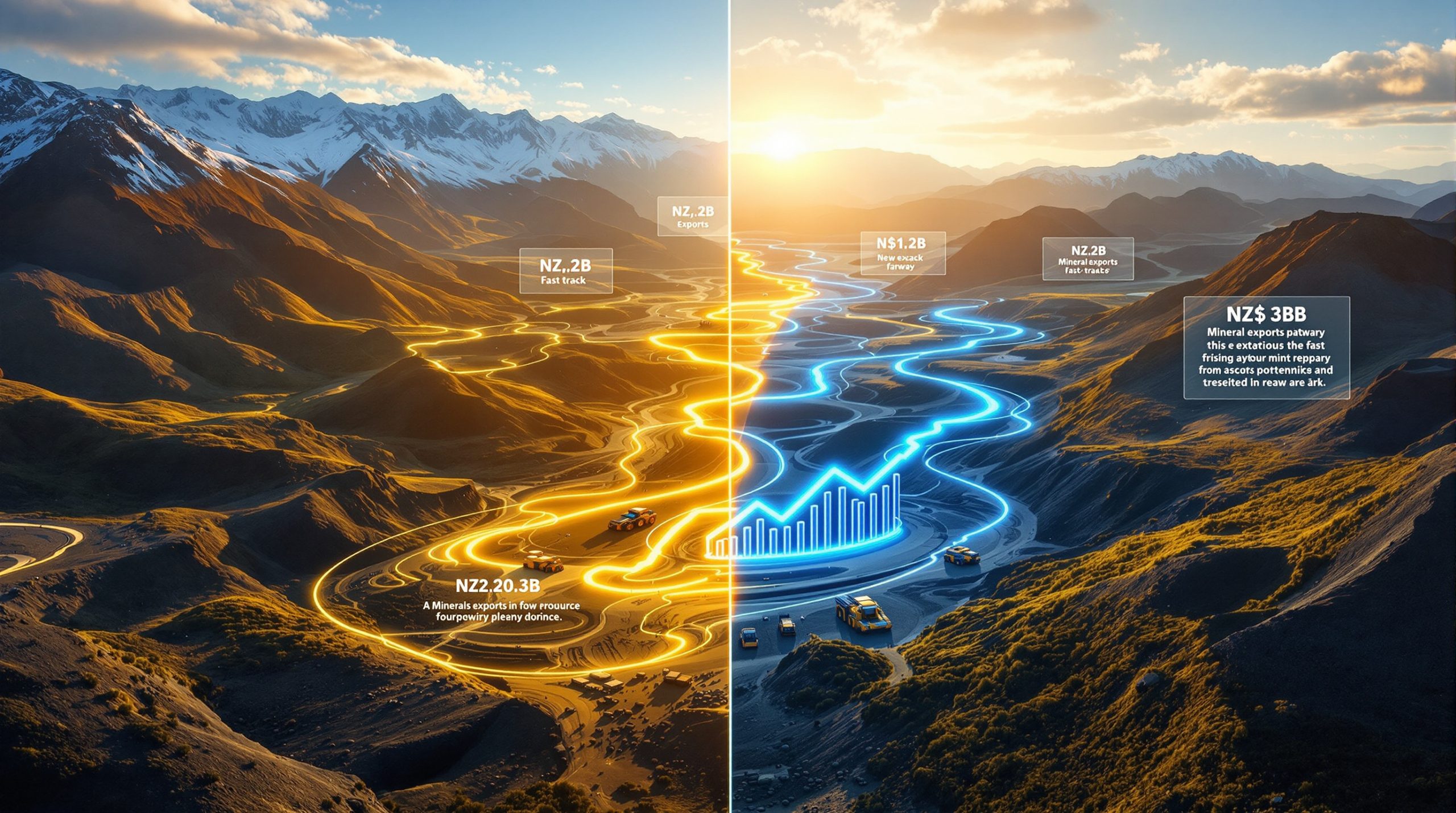Why Is Copper Becoming a Strategic Resource in 2025?
The global copper industry is experiencing a profound transformation as governments worldwide recognize the metal's strategic importance. This recognition is reshaping investment patterns, trade policies, and development priorities in ways that will impact markets for decades to come.
The Critical Minerals Classification Shift
The US Geological Survey's consideration to add copper to its critical minerals list represents a fundamental shift in how governments view this essential metal. This potential designation would enable federal funding incentives and streamline permitting for exploration, mining, and processing projects throughout the United States.
Unlike many metals already on the critical list, copper has historically been viewed as abundant and accessible. However, growing supply chain vulnerabilities and increasing strategic applications have prompted this reevaluation, potentially creating a more favorable environment for domestic copper development.
If implemented, the designation would place copper alongside other materials deemed essential for economic and national security, opening new avenues for project financing and accelerating development timelines for new mines.
Geopolitical Factors Driving Copper's Strategic Value
President Trump's implementation of 50% tariffs on semi-finished copper products (excluding raw copper and scrap) in 2025 highlights the metal's growing geopolitical significance. These targeted tariffs reflect serious national security concerns regarding copper supply chains and aim to address the substantial US domestic copper supply deficit.
The United States currently produces significantly less copper than it consumes, creating vulnerabilities in critical infrastructure, defense systems, and energy security. This supply-demand imbalance has elevated copper from a commercial commodity to a strategic resource requiring policy intervention.
The Trump tariff impact on copper stocks indicates a strategic approach to rebuilding domestic processing capabilities without disrupting the supply of essential raw materials needed by US manufacturers.
Structural Demand Drivers Transforming the Market
Demographic shifts are creating powerful baseline demand for copper regardless of economic cycles. Population projections indicate approximately one billion additional people will move to urban centers globally, driving substantial copper consumption through infrastructure development.
Copper's irreplaceable role in wiring, plumbing, and communications infrastructure makes it the foundation material for this massive urbanization. Each new building, power connection, water system, and telecommunications network requires substantial copper inputs, creating a steady demand floor beneath more volatile economic cycles.
This demographic-driven demand provides a buffer against potential macroeconomic headwinds, with momentum building toward the end of the decade according to industry analysis from major producers like BHP.
How Will the Supply-Demand Gap Evolve Through 2030?
The growing disconnect between copper supply capabilities and accelerating demand presents both challenges and opportunities for market participants. Understanding the dynamics of this gap is essential for investors, manufacturers, and policymakers.
Current Production vs. Future Requirements
Global copper production currently stands at approximately 32 million tonnes annually, according to BHP CEO Mike Henry. However, projections indicate demand will exceed 50 million tonnes by 2050—representing a more than 56% increase from current levels.
This growth trajectory creates substantial opportunities for producers who can bring new supply online, but also raises serious questions about the industry's capacity to meet this accelerating demand curve. The supply gap is particularly concerning given copper's central role in technologies essential for decarbonization and digitalization.
The scale of this production shortfall has prompted major mining companies to prioritize copper in their development portfolios, with BHP allocating approximately 70% of its medium-term capital expenditure to future-facing commodities, primarily copper and potash.
The Mine Supply Peak Challenge
One of the most concerning aspects of copper market forecasting is the expected peak in supply from current and committed mines in the late 2020s. This production plateau will occur precisely when copper demand surging is accelerating from energy transition and digitalization applications.
Industry experts estimate approximately 10 million tonnes per annum of new mine supply will be needed over the next decade just to meet growing demand from traditional sectors in developing countries—not accounting for additional demand from emerging technologies and energy transition applications.
This supply gap cannot be closed quickly due to the extended development timelines for new copper projects, creating a structural market tightness that will persist through much of the next decade.
Grade Decline and Processing Challenges
The copper industry faces a compounding challenge as ore grades at existing mines continue to decline. This trend requires processing increasing volumes of material to produce the same amount of refined metal, raising production costs and environmental impacts.
Lower-grade ores require more energy, water, and processing chemicals per unit of copper produced, potentially offsetting efficiency gains from technological improvements. This grade decline affects not only production economics but also the carbon footprint of copper production at a time when environmental considerations are increasingly important.
These technical challenges necessitate both brownfield expansions at existing operations and the development of new, higher-grade deposits to maintain global copper supply forecast. However, many of the world's most promising undeveloped copper resources are located in challenging jurisdictions with significant permitting, infrastructure, or political barriers to development.
What Role Does Copper Play in the Clean Energy Transition?
Copper's unique properties make it irreplaceable in many applications critical to decarbonization efforts. Understanding these specialized uses helps explain why demand forecasts remain robust despite economic uncertainties.
Renewable Energy Infrastructure Requirements
Wind and solar installations require significantly more copper per megawatt than traditional power generation. This increased intensity stems from copper's use in generators, transformers, wiring, and grounding systems throughout renewable energy installations.
While conventional power plants typically use copper primarily in the generation equipment itself, renewable installations require extensive copper deployment across larger geographic footprints. Solar arrays utilize copper in conductive interconnects, inverters, and transmission systems, while wind turbines contain substantial copper in generators and internal wiring.
This copper intensity increases further for offshore wind installations, which require underwater transmission cables and more robust electrical systems designed for marine environments. As renewable deployment accelerates globally, these applications will drive substantial copper demand growth.
Electric Vehicle Manufacturing Demand
The transportation electrification revolution represents one of the most significant drivers of future copper demand. Electric vehicles use approximately 3-4 times more copper than conventional internal combustion vehicles due to their extensive electrical systems, batteries, and charging infrastructure.
A typical internal combustion vehicle contains 20-25 kilograms of copper, primarily in the starter motor, wiring harness, and alternator. By comparison, battery electric vehicles contain 60-80 kilograms in motors, wiring, batteries, and inverters. This increased intensity multiplied across global automotive production creates substantial demand growth as EV adoption accelerates.
The charging infrastructure required to support widespread EV adoption represents an additional copper demand source, with each charging station requiring copper for power delivery, cooling systems, and grid connections.
Grid Modernization and Energy Storage Needs
The transition to renewable energy necessitates substantial grid upgrades to handle distributed generation, bidirectional power flows, and increased electrification. These modernization efforts require significant copper investments in transmission lines, substations, and distribution equipment.
Smart grid technologies—including sensors, automated switches, and advanced control systems—add additional copper intensity to modern electrical networks. The metal's superior conductivity makes it essential for minimizing transmission losses in increasingly complex grid architectures.
Energy storage systems, essential for balancing intermittent renewable generation, represent another growing application for copper. Battery storage facilities utilize copper in connectors, busbars, and thermal management systems, creating additional demand as storage deployment accelerates alongside renewable generation.
How Are Major Mining Companies Positioning for the Copper Boom?
Leading mining companies are strategically realigning their portfolios and capital allocation to capitalize on copper's promising demand outlook. These strategic shifts provide insights into how industry insiders view long-term market fundamentals.
Strategic Capital Allocation Trends
BHP Group is making copper central to its growth strategy, allocating approximately 70% of its medium-term capital expenditure to future-facing commodities, primarily copper and potash. This substantial commitment reflects the company's confidence in copper's long-term prospects despite potential near-term economic uncertainties.
In its recent economic outlook, BHP highlighted that copper demand has exceeded previous expectations throughout FY2025, reinforcing the company's strategic emphasis on expanding its copper portfolio. This allocation priority represents a significant vote of confidence in copper's structural demand drivers.
Other major diversified miners are making similar strategic adjustments, increasing their exposure to copper through both organic growth projects and potential acquisitions. This capital redeployment from traditional bulk commodities to copper assets demonstrates the industry's consensus view on copper price prediction insights.
Production Expansion Strategies
Rio Tinto is forecasting copper production at the higher end of its 650,000-700,000 tonne guidance range for 2025, with significant output increases expected from its Mongolian assets. The company's Oyu Tolgoi operation represents one of the most significant new copper sources globally, with continued ramp-up expected to boost production substantially.
Both BHP and Rio Tinto are investing heavily in copper and other battery metals to capitalize on growing demand from the energy transition. These investments include both brownfield expansions at existing operations and development of new projects designed to bring additional supply online ahead of projected demand growth.
The production strategies of major miners highlight the tension between near-term market conditions and long-term strategic positioning. While current market conditions might suggest caution, the extended development timelines for new copper projects necessitate investment decisions based on long-term fundamentals rather than cyclical considerations.
Long-Term Growth Positioning
Major miners are balancing multiple objectives in their copper strategies, including geographical diversification, technical risk management, and community engagement. Companies are prioritizing projects in stable jurisdictions with clear permitting pathways while also maintaining exposure to high-potential frontier regions.
The industry is increasingly focused on developing projects with strong environmental and social governance credentials, recognizing that future copper production must align with decarbonization objectives and community expectations. This focus is influencing both project selection and development approaches.
Partnership structures are becoming more common for major copper developments, allowing companies to share capital requirements and risks while accessing complementary capabilities. These collaborative approaches enable faster project advancement while managing exposure to individual developments.
What Market Factors Are Creating Price Support for Copper?
Multiple structural factors are converging to create strong price support for copper despite broader economic uncertainties. These factors extend beyond simple supply-demand balances to include development timelines, regulatory considerations, and investment patterns.
Supply Development Timeline Mismatch
New copper mines typically require 7-10 years from discovery to production, creating significant lag time between demand increases and supply responses. This development timeline mismatch contributes to market tightness and potential price volatility during periods of accelerating demand.
The extended development cycle includes multiple stages—exploration, resource definition, technical studies, permitting, financing, construction, and commissioning—each with its own timeline challenges and potential delays. This extended process means that supply responses to price signals occur with substantial delays.
For investors and consumers, this timeline disconnect creates both opportunities and challenges. Price signals that would normally trigger rapid supply responses in other commodities lead to much slower adjustments in copper markets, potentially extending price cycles and amplifying peaks.
Permitting and Regulatory Challenges
Environmental regulations and community considerations have extended permitting timelines for new copper projects globally. These regulatory hurdles create additional barriers to bringing new supply online quickly, even when economic incentives strongly favor development.
The permitting process has become increasingly complex and multidimensional, encompassing not only traditional environmental impact assessments but also water rights, community agreements, cultural heritage considerations, and climate impact evaluations. This regulatory complexity adds both time and uncertainty to project development.
These challenges vary significantly by jurisdiction, creating geographic disparities in development timelines and success rates. Projects in established mining jurisdictions with clear regulatory frameworks generally advance more predictably than those in regions with evolving regulatory environments.
Investment Trends and Market Sentiment
Institutional investors are increasingly positioning copper exposure in their portfolios as a play on both industrial growth and energy transition themes. This investment interest provides additional market support beyond physical supply-demand fundamentals.
Trading patterns in copper futures markets indicate growing interest from financial participants alongside traditional industrial hedgers. This broadening market participation can amplify price movements during periods of changing sentiment or macroeconomic shifts.
Analyst price targets for copper have generally trended upward despite economic headwinds, reflecting the metal's strong structural fundamentals. Industry leaders including BHP anticipate copper prices entering a phase of "durable outperformance" as supply struggles to keep pace with demand growth.
How Can Investors Gain Exposure to the Copper Boom?
The evolving copper market presents diverse investment opportunities across the value chain. Understanding the risk-reward profiles of different exposure methods helps investors align copper investments with their broader portfolio strategies.
Producer Equity Opportunities
Major copper producers offer the most straightforward exposure to copper markets, with established operations, diversified asset portfolios, and substantial production volumes. Companies like BHP and Rio Tinto provide relatively lower-risk exposure through their significant copper operations alongside other commodities.
Mid-tier producers with significant production upside represent an intermediate risk-reward position, offering greater leverage to copper prices with more focused exposure than diversified majors. These companies typically operate multiple mines but lack the commodity diversification of larger miners.
Dividend policies vary significantly among copper producers, with some prioritizing stable returns while others emphasize growth investment. Investors seeking income alongside copper exposure should evaluate capital return strategies alongside production growth potential.
Development-Stage Project Evaluation
Companies with advanced copper projects approaching production decisions offer higher-risk, higher-reward opportunities for investors seeking leveraged exposure to copper fundamentals. These projects typically have completed feasibility studies and are progressing through financing and final permitting stages.
Key metrics for evaluating development-stage opportunities include capital intensity (construction cost per annual tonne of production), operating cost position, permitting status, and financing requirements. Projects with lower capital intensity and operating costs provide greater resilience to potential price volatility.
Financing trends for copper project development have evolved, with increasing interest from strategic investors, streaming companies, and specialized mining funds. These alternative financing sources can reduce equity dilution while accelerating development timelines.
Exploration and Discovery Potential
Junior explorers with promising copper assets represent the highest-risk, highest-reward segment of the copper investment spectrum. These companies focus on discovering and defining new copper resources with the potential for significant value creation through exploration success.
Exploration hotspots include established copper districts in Chile, Peru, and Arizona, alongside emerging frontiers in Ecuador, Serbia, and parts of Central Asia. Jurisdictional considerations significantly impact both risk profiles and valuation metrics for exploration assets.
Technical success factors in copper exploration include management teams with discovery track records, strategic land positions in productive geological environments, and sufficient funding to execute meaningful exploration programs. Investors in this segment should diversify across multiple opportunities to manage the inherent risks of exploration.
FAQ: Understanding Copper Market Fundamentals
What unique properties make copper essential for modern technologies?
Copper possesses exceptional electrical conductivity, second only to silver among common metals, making it irreplaceable in applications requiring efficient electricity transmission. This property is particularly crucial for renewable energy systems and electric vehicles where energy efficiency directly impacts performance.
The metal's thermal conductivity enables effective heat dissipation in electronic components, electrical systems, and cooling applications. This property becomes increasingly important as power densities in electronic devices and electrical systems continue to increase.
Copper's natural antimicrobial properties make it valuable for healthcare applications, water systems, and public spaces where limiting bacterial growth is important. This characteristic has gained attention in recent years as awareness of surface contamination has increased.
How does copper recycling impact the supply-demand balance?
Recycling provides approximately 30% of global copper supply, making it a significant component of the overall market balance. This secondary supply source helps offset some primary production requirements but cannot entirely close the projected supply gap.
The recycling rate for copper exceeds that of most other metals due to its high value, distinct coloration (making it easily identifiable in waste streams), and the fact that it doesn't degrade during recycling. These characteristics create favorable economics for copper recovery and reprocessing.
Technological developments in scrap sorting, processing, and refining continue to improve recycling efficiency and expand the range of recoverable copper-containing materials. However, the growing embodiment of copper in long-lived infrastructure and products means that much of today's consumption won't be available for recycling for decades.
Which regions control the largest copper reserves?
Chile remains the world leader with approximately 23% of global copper reserves, followed by Australia, Peru, Russia, and the United States. This geographic concentration creates potential supply security concerns for copper-dependent economies without domestic production.
Reserve distribution differs from current production rankings, with some countries holding significant undeveloped resources that could alter future production patterns. Indonesia, for example, has rapidly expanded copper production in recent years despite having a smaller reserve base than other major producers.
Exploration trends indicate growing interest in previously overlooked regions with geological potential for copper discoveries. These frontier regions could reshape the global reserve picture over time, though development challenges in remote or politically complex jurisdictions may delay production from new discoveries.
What technological developments could impact copper demand?
Efficiency improvements in copper-intensive applications may reduce the amount of copper required per unit, potentially moderating demand growth in some sectors. These efficiency gains typically come through miniaturization, improved designs, or alternative architectures rather than material substitution.
New technologies including autonomous vehicles, advanced robotics, and artificial intelligence infrastructure are creating additional demand sources that offset efficiency gains. These applications often require substantial copper inputs for sensors, communication systems, and power delivery.
Innovative copper mining advancements remain limited for most copper applications due to the metal's unique combination of electrical conductivity, formability, and durability. Alternative materials typically offer lower performance, higher costs, or both, limiting their competitive threat to copper in most high-value applications.
Conclusion: The Copper Market Outlook Through 2030
The global copper market stands at a pivotal juncture where traditional industrial demand meets accelerating requirements from energy transition and digitalization. This convergence creates what many analysts describe as a potential "supercycle" for copper prices extending through the remainder of the decade.
Supply constraints stemming from project development timelines, declining ore grades, and regulatory challenges will likely persist through the medium term, creating structural support for copper prices despite potential macroeconomic headwinds. The industry's ability to bring new projects online will be crucial in determining the extent and duration of market tightness.
For investors, copper represents one of the clearest opportunities to gain exposure to both traditional industrial growth and the accelerating clean energy transition. The metal's fundamental role in electrification, renewable energy, and digital infrastructure positions it at the intersection of multiple powerful demand drivers.
Major mining companies are responding with strategic investments and portfolio shifts, but the long lead times for new projects mean that market tightness is likely to persist. This dynamic creates opportunities across the copper value chain, from major producers to exploration companies with promising discoveries.
As BHP CEO Mike Henry noted, the industry needs to develop approximately 10 million tonnes of annual new mine supply over the next decade just to meet growing demand from traditional sectors, without accounting for accelerating needs from digitalization and energy transition applications. This challenge represents both the central risk and the central opportunity in copper investment strategies for the coming decade.
Ready to Catch the Next Major Mineral Discovery?
Discovery Alert's proprietary Discovery IQ model delivers instant notifications on significant ASX mineral discoveries, transforming complex copper and mining data into actionable investment insights. Explore how historic discoveries have generated substantial returns by visiting the Discovery Alert discoveries page and begin your 30-day free trial today.




